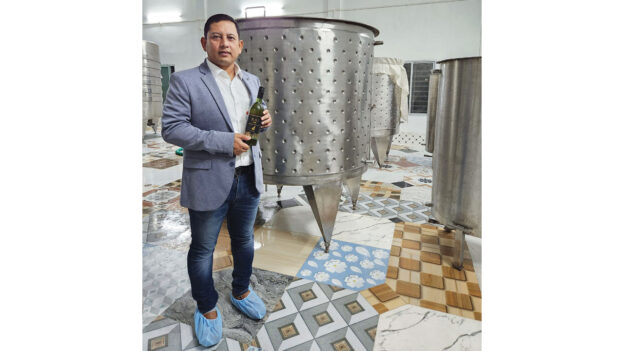The sweet mild flavour doesn’t easily give it away; a taste so distinct and broad at the same time. First time drinkers find it hard to describe, for its aroma is more “vinegarish” than alcoholic. But in places where this drink is more of a traditional staple, rice wine means more than just a drink. For perspective, South Asians love their rice wine. And if you’ve been around a lot, you’ve probably heard of Sake, the iconic Japanese brew with a global reputation. In many other countries like China, South Korea, Thailand, Malaysia, and Indonesia, rice wine comes in different forms, recipes, and flavours.
India also has a rich history of rice wine. In Assam, the North-eastern part of the nation, there is a booming rice wine segment that is centuries old, with each tribe and ethnicity having its own unique taste. Communities such as Bodo and Ahom significantly use the glutinous rice, the Karbi, Mishing and Rabha tribes use non-glutinous rice. Although the differences seem to be minor, yet these subtle variations and adaptations do bring about significant differences in the quality and characteristics of the rice wine. Whether it’s Xaj Pani by the Ahom tribe, Apong in Mishing, Jou in Bodo, Karbi’s Hor, or Rabha’s Chako, one line that runs through is the fact that these rice wines are part of the social, economic, and traditional life of the people. With regional support now received and policy reforms in place, local producers are now taking advantage of the new policy environment to produce these heritage alcoholic beverages for all.
When the North-East Agro Products and Services (NEAPS) approached the Assam Agricultural University months ago to develop a rice brew technology for them, it was in line with the new mandate to grow the local industry. Today, the Jorhat-based company has launched its commercial brand, “XAJ”, its own version of Xaj Pani, the Ahom variant of rice wine. But for Akash Jyoti Gogoi, director of NEAPS, it was an ambition first nursed in 2014. “I had visited South Korea at the time and had a taste of Makgeolli, a popular rice wine in the country, and I realised that our own Xaj Pani tasted better.
“I then intentionally searched out other popular rice wines of South East Asian origin, such as the Sake of Japan and Lao Lao of Laos. I again felt that taste-wise, our Xaj Pani can be the winner. Moreover, Xaj Pani is 100% herbal in preparation. Thus, I decided to go commercial with Xaj,” says Gogoi.
Starting out in strange waters
Flanked by his wife, Mampi Gogoi and his cousin Uttam Chetia of Indian Institute of Technology Bombay, Gogoi set out to carve a niche for XAJ. A total of ₹3.5 crore formed the initial investment for the business, part of which was a ₹65 lac machinery loan from the government of India’s North East Centre for Technology Application & Reach (NECTAR) programme. Since inception, NEAPS has continued to work towards building capacity and growing its reach in the market. Thanks to the Heritage Liquor Bill of Assam, they’re able to sell XAJ in departmental stores, grocery stores, and restaurants across the state after procuring their Heritage Liquor Retailer License.
Although rice wine is a local craft in Assam, Gogoi needed to brush up on his skills. As he says, the process is both scientific and artistic. “The starter cake is made traditionally using local herbs with rich medicinal value. Then the sticky rice is cooked, before mixing it with the starter cake and kept for 24-36 hours. After that the rice is sifted to the fermenter tank and left for 14-16 days before the wine is extracted. Then the wine is filtered in a 3-tier filtration system, before it is filled in 750 ml bottles,” he reveals.
“XAJ has a shelf life of more than two years. The alcohol content is 12%-13% V/V, as per the government guidelines. We also intend to introduce the 375 ml bottle very soon,” he reveals.
Starting off production just two months ago, the company currently produces about 25% of its full capacity. What NEAPS has been able to do in the last few months is to take a complete rural product and transform it into a scientifically stable product. Now with a standard operating procedure (SOP), a process technology, and process machineries and equipment, Gogoi says upgrading its design is the next task for the brand. XAJ offers a unique smoky flavour, herbal value, and a sense of heritage which have been well received so far.
Educating us about the cultural background of this drink, Assam’s Tinsukia-based Sanjeev Konwar belonging to the Ahom community, says that the Ahoms possess an age-old tradition of offering Xaj Pani to their forefathers to please them and seek their blessings. “In special ceremonies held during childbirth, marriage, and even funeral, Xaj Pani is a primary element. Besides, Xaj is also prepared during Bihu and served as a welcome drink to guests. It is naturally loaded with a variety of probiotics and has great therapeutic values. There are even many folk songs centred around Xaj,” he explains.
A promising XAJ future
Indeed, rice alcoholic beverages present a lot of prospects for brands that invest in technology and innovation. For NEAPS, the plan is to go beyond Assam and move into the major cities of India. But beyond that, the goal for Gogoi is to export XAJ to other countries in South East Asia and Europe, so that they can have a feel of what real rice wine tastes like. And just like Judima (rice wine of Dimasa tribe), which has earned a Geographic Indication tag and put the global spotlight on Assam, the plan is to make XAJ an Assamese identity and tourist attraction.

